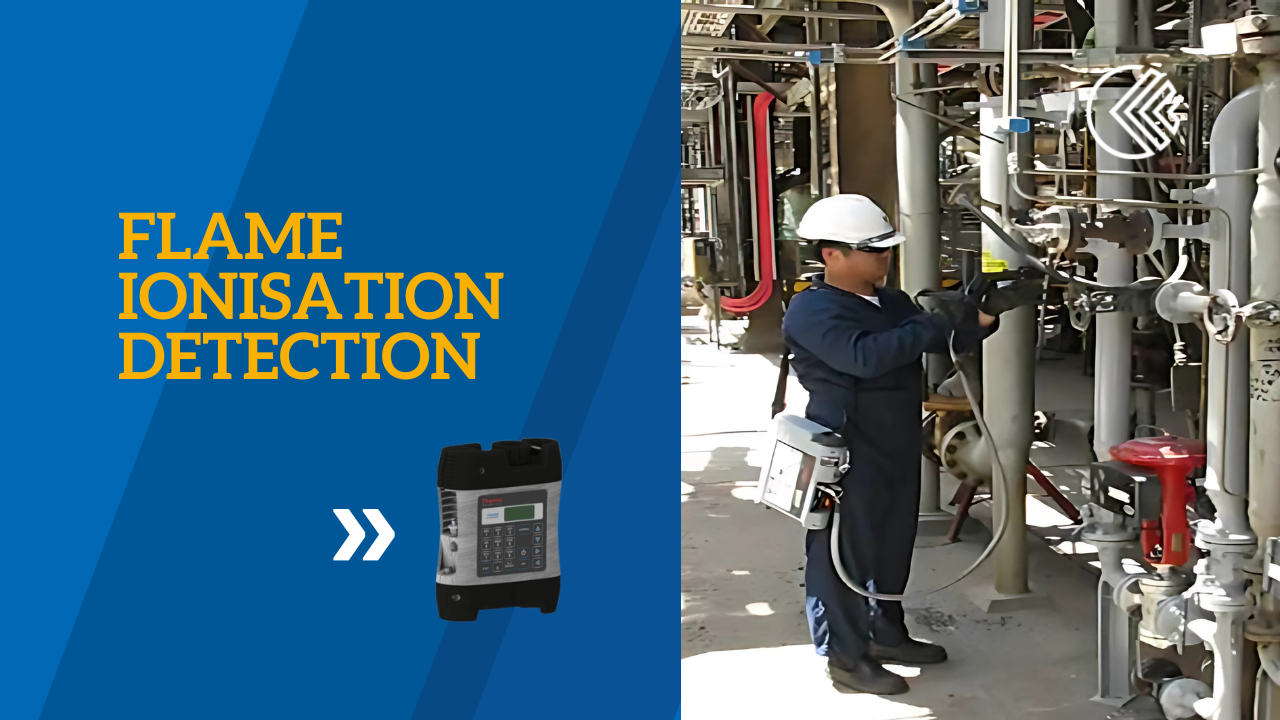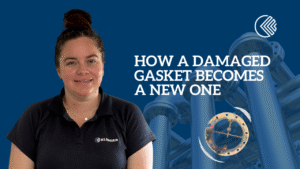
- KLINGER Australia
- Blogs
- Flame Ionisation Detection in Modern Emissions Strategy

Flame Ionisation Detection, or FID, has long been considered a gold standard in hydrocarbon detection. It’s a staple in environmental monitoring, leak detection, and gas analysis across a wide range of industries. Most people in the field have heard of it. Many have used it. But how deeply do we really understand how it works, and more importantly, how it fits into a modern emissions strategy?
Let’s take a closer look at what makes FID so valuable, and where its strengths meet their limits.
At its core, Flame Ionisation Detection is a technique for measuring the presence of hydrocarbons in a gas sample. The process is straightforward in principle but remarkably effective.
Here’s how it works.
A gas sample is introduced into a hydrogen flame. As hydrocarbons in the sample combust, they ionise—meaning they release charged particles. These ions create a tiny electric current between two electrodes. That current is directly proportional to the concentration of hydrocarbons in the sample.
Despite being a mature technology, FID remains indispensable in the field because:
- High sensitivity: Capable of detecting hydrocarbons down to parts per billion
- Quantitative accuracy: Provides real-time concentration data
- Proven and consistent: Widely used in regulatory and industrial applications
- Portable and efficient: Easy to deploy for spot checks or routine surveys
If you need to know how much methane is leaking from a flange or valve, FID will tell you, quickly. It’s elegant, fast, and highly reliable.
However, No tool is perfect, and FID has its blind spots. It cannot detect gases that do not contain hydrocarbons, so you won’t get readings for CO₂, nitrogen or other inorganic compounds. It also provides no visual feedback. In a nutshell, you get numbers, but not location or context. For large facilities or complex sites, that can be limiting.
In addition, FID requires hydrogen fuel, regular calibration and safe handling protocols. It’s best used by trained, experienced professionals.
Effective leak detection is not a single-tool task.
With growing pressure from regulatory bodies, ESG mandates and operational efficiency goals, it’s not enough to just find a leak. At our Integrity Services, we use FID, but we build on it with technologies that provide additional insight and efficiency.
Quantitative Optical Gas Imaging (QOGI): QOGI takes traditional optical gas imaging a step further. It not only visualises gas leaks in real time, it also quantifies them. That means we can see the leak and measure its size, all while capturing video for documentation and compliance.
Hi-Flow Sampler: For larger leaks, we use Hi-Flow samplers to calculate the actual mass flow rate of emissions. This gives us a detailed, verifiable measure of leak volume, which is critical for both environmental reporting and cost-saving maintenance decisions.
Hydrogen Detection Equipment: As hydrogen use expands in industrial processes and energy infrastructure, the ability to detect hydrogen safely and accurately is becoming critical. Our toolkit includes dedicated hydrogen detection equipment capable of identifying leaks quickly—even at low concentrations.
Imagine this scenario. During a scheduled LDAR survey, a technician uses an FID to detect elevated methane near a compressor. A QOGI unit then confirms the source visually and quantifies the leak in real time. Finally, a Hi-Flow sampler is used to validate the flow rate for emissions reporting. FID remains a vital part of that process. But when paired with QOGI and flow-rate measurement, it becomes part of a full-spectrum response. Accurate. Documented. Actionable. You get to understand it, document it, quantify it, and respond to it.
Let’s Talk Emissions Strategy
If you’re looking to strengthen your emissions monitoring approach, we can help. Our Integrity Services team work with you to build a solution stack tailored to your site, your compliance framework and your operational priorities.
Whether you’re running spot checks or mapping full-facility emissions, we will support your goals with the right combination of tools and expertise. Ask the hard questions. We’re ready.
Share this article on social
Need help with a product?
Get in touch
Call 1300 798 279 (from Australia)
+61 8 9251 1688 (outside Australia)
OR send us your enquiry


